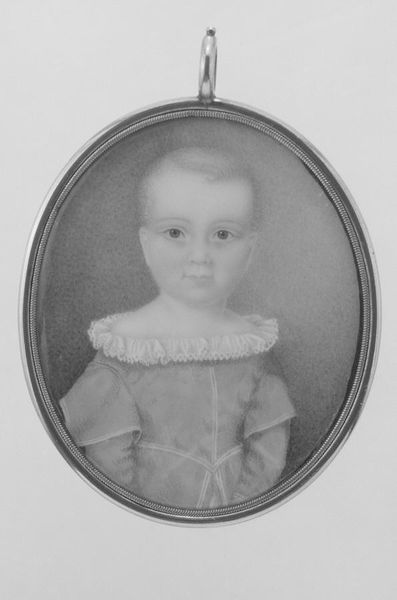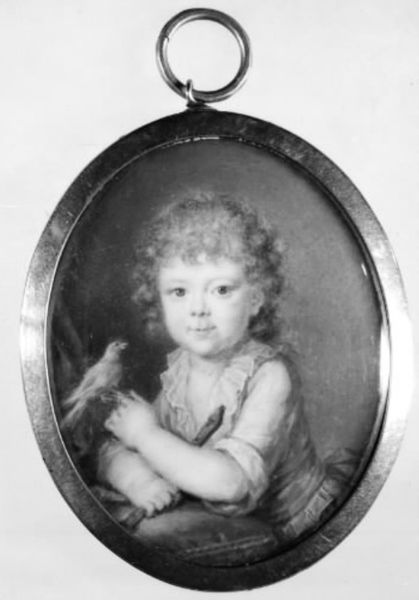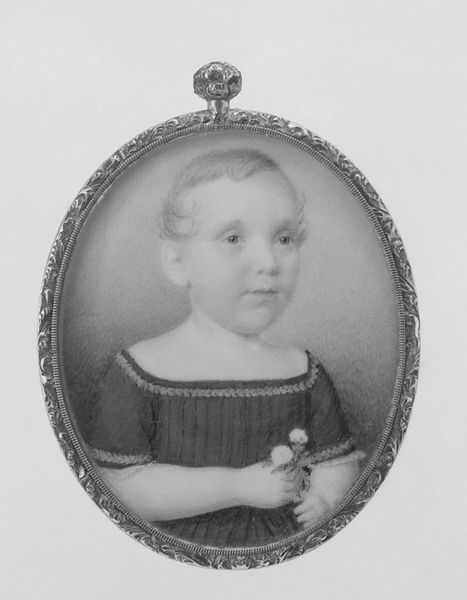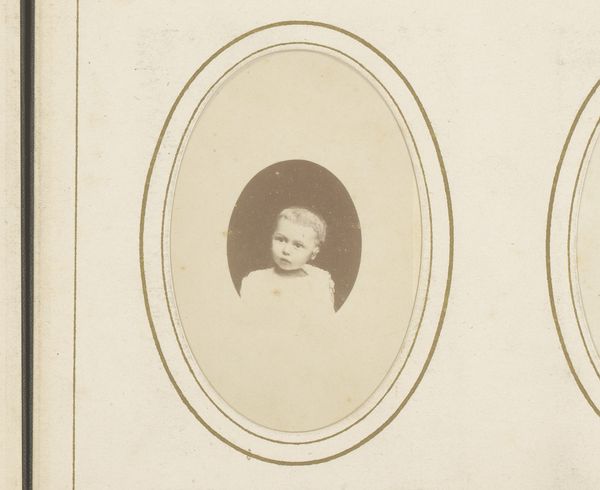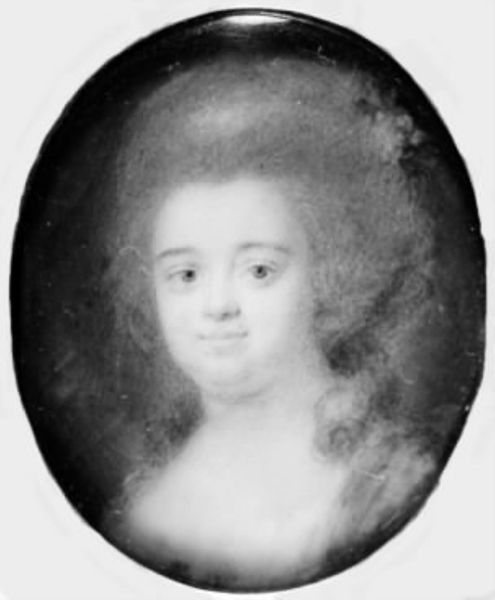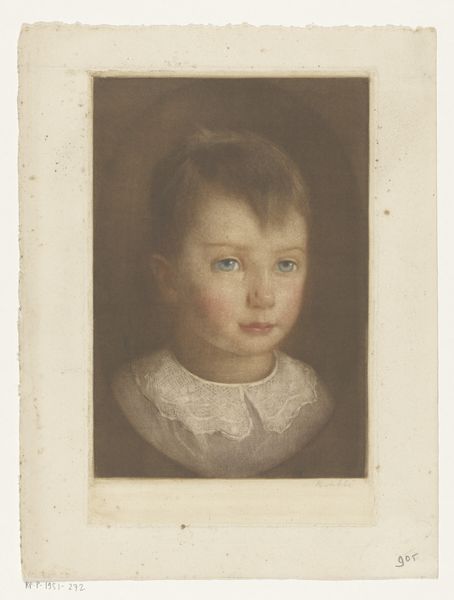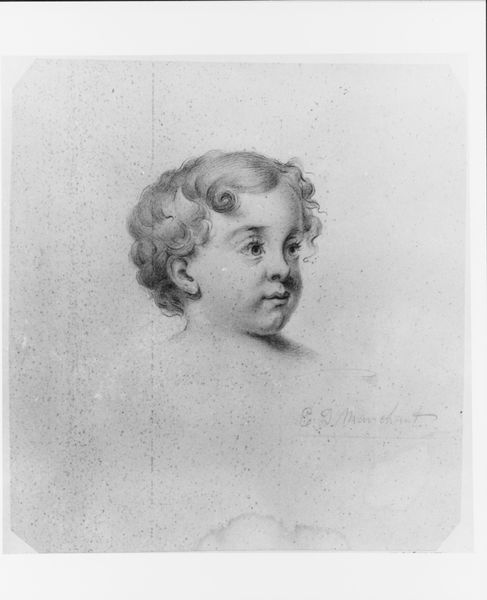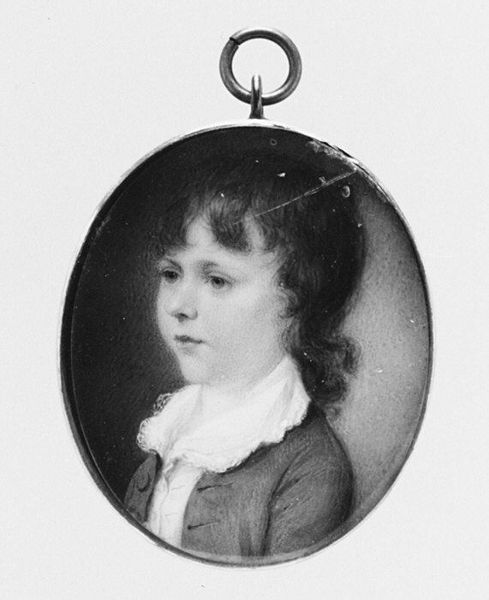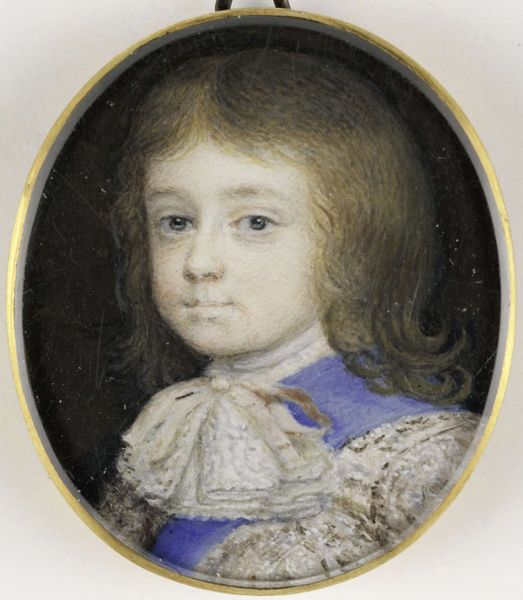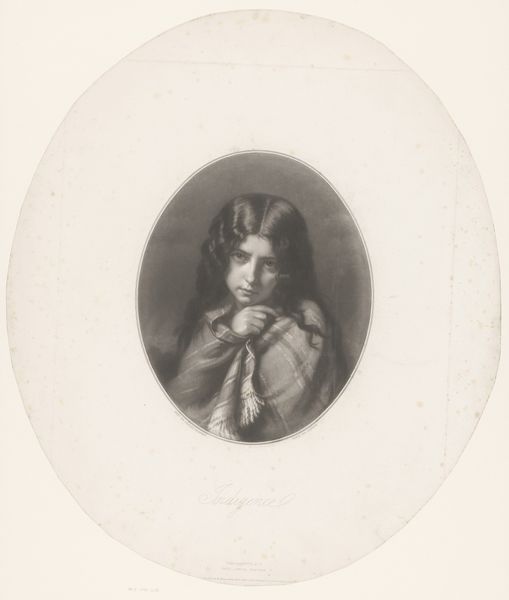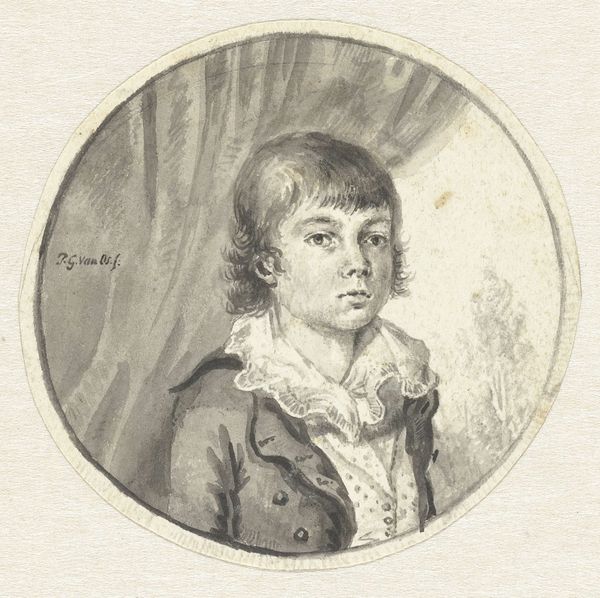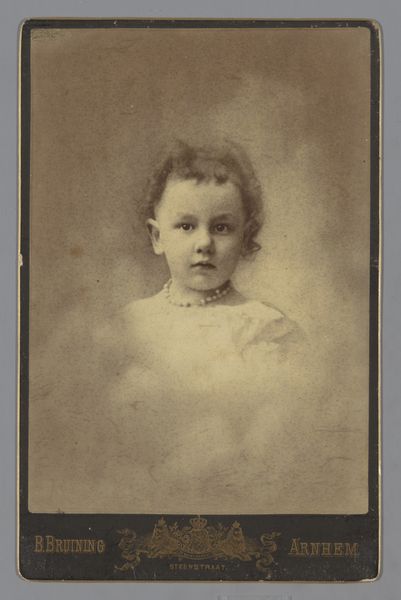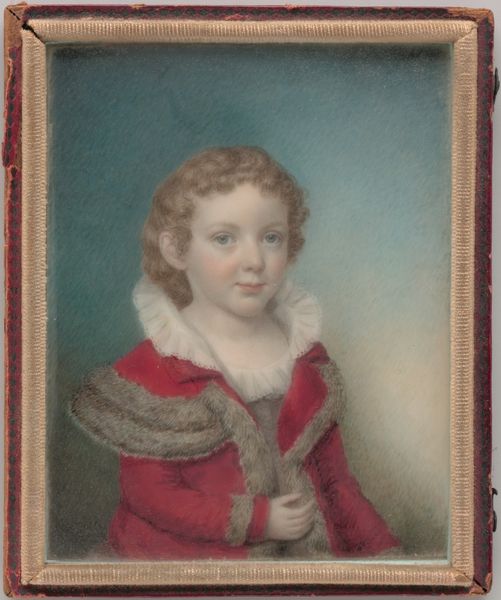
Dimensions: Sight: 1 1/4 x 1 in. (3.2 x 2.5 cm)
Copyright: Public Domain
Editor: We're looking at "Alice Cushman," a drawing from 1856 by George Hewitt Cushman. It's currently held at the Metropolitan Museum of Art. It has such a delicate, innocent feel. What do you see in this piece beyond just a portrait of a child? Curator: This miniature offers a window into the 19th-century culture of childhood and portraiture. These were often commissioned as keepsakes, family records, and even tools for social networking, weren't they? Editor: They were? I always just thought they were sentimental mementos. Curator: Sentimental, yes, but also deeply tied to social status. Who could afford to have their child immortalized in such a way? Consider how this artwork functions within a larger visual language. The soft features and idealized presentation reflect romantic ideals. Editor: So, it’s not *just* about little Alice, but what her parents wanted to project? Curator: Precisely. How does the museum displaying this change its message? Who is this work *for* now, do you think? Is it still for the family, or something bigger? Editor: Good point! Placing it in a museum transforms it from a private family memory into a public piece of art, opening it to wider interpretation. It really makes you think about the changing roles of art. Curator: Exactly! And how we continue to find new meanings within these objects through historical context and shifting social perspectives. Editor: This has totally changed how I see miniature portraits! I will not look at them the same way again. Thanks for your perspective!
Comments
No comments
Be the first to comment and join the conversation on the ultimate creative platform.
